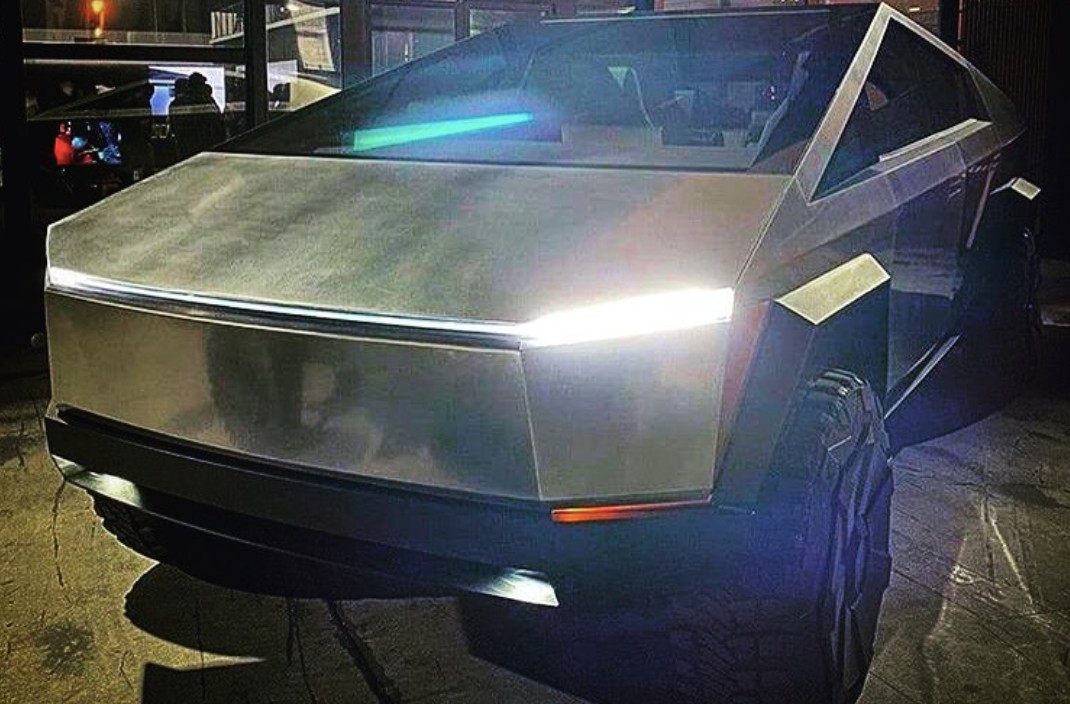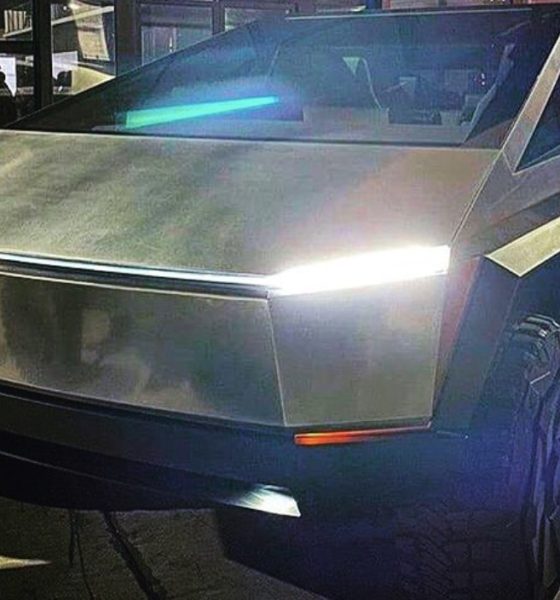

News
Tesla’s Cybertruck Terafactory poised to get incentive package from Texas officials
Travis County, Texas officials, are currently in the process of working out the details of an incentive deal with Tesla. The incentives are geared toward bringing the electric automaker’s next production facility to the city of Austin.
The Travis County Commissioners Court is reportedly meeting to discuss potential incentives later today, June 16, The Statesman reported. The terms of the incentives will be discussed during the meeting, and a vote from members of the Commissioners Court will be held in the coming weeks.
The specific details of the possible incentive package for Tesla have not been disclosed publicly, and members of the Court have not commented on the matter as of writing.
Tuesday’s Commissioner’s Court agenda contains an item that is recognized as “consider and take appropriate action on a project under Travis County Code Chapter 28.” Chapter 28 of the Travis County Code talks about incentives for local economic development, which could refer to the reports of Tesla’s potential incentive package.
Sources close to the situation believe that Agenda Item 21 is related to Tesla’s incentive package. The United Auto Workers (UAW) director of public relations, Brian Rothenberg, believes “that Item 21 on the agenda is related to Tesla.” The UAW is a union for employees of automakers.
UAW Vice President Cindy Estrada also believes that Item 21 is directly related to Tesla’s possible presence in the area. “You have to look strongly at the track record of a company and their commitment not just to public dollars, but to the community investment and actual return on jobs created,” she said. “Tesla has a track record of collecting public subsidies from several states but not delivering on their promises. That is why it is important this time for Tesla to commit to community assurances for Travis County before getting subsidies.”
It has been rumored that Tesla is eyeing either Austin, Texas, or Tulsa, Oklahoma, for its next production facility. While it is widely considered that Austin is an overwhelming favorite due to previous comments made by Tesla CEO Elon Musk, Tulsa is pushing hard to convince the electric automaker it would be a good fit for the company’s next production facility.
Either location is ideal for Tesla’s upcoming plans, which include the production of the highly-anticipated Cybertruck and the recently released Model Y crossover. Musk has stated that he wanted the company’s next U.S. facility to be in the central portion of the country, which would alleviate East Coast customers from extended delivery periods.
Musk and company CFO Zachary Kirkhorn also indicated during the Q1 2020 Earnings Call that the next production facility the company builds would be the largest thus far. “I’ll also add that our Gigas have gotten bigger,” Kirkhorn said. Musk added, “It could arguably — it could start being called Tera.”
Kirkhorn expanded on the idea of more extensive production facilities as well. “Yes, with multiple products as well. And so the absolute number of Giga factories, we may ultimately build might be less, but each one is larger,” he said. “And that’s under our belief that just significant efficiencies by having as much as possible, and similar product lines under the same roof, and as much vertical integration as possible all in one facility.”
At least 10,000 employees are expected to work at the new facility based on the fact that it will be larger than the Fremont factory. If Tesla does choose the Lone Star State, it would be a “great win for Texas and Austin,” economist Angelos Angelou stated.

News
Tesla FSD fleet is nearing 7 billion total miles, including 2.5 billion city miles
As can be seen on Tesla’s official FSD webpage, vehicles equipped with the system have now navigated over 6.99 billion miles.

Tesla’s Full Self-Driving (Supervised) fleet is closing in on almost 7 billion total miles driven, as per data posted by the company on its official FSD webpage.
These figures hint at the massive scale of data fueling Tesla’s rapid FSD improvements, which have been quite notable as of late.
FSD mileage milestones
As can be seen on Tesla’s official FSD webpage, vehicles equipped with the system have now navigated over 6.99 billion miles. Tesla owner and avid FSD tester Whole Mars Catalog also shared a screenshot indicating that from the nearly 7 billion miles traveled by the FSD fleet, more than 2.5 billion miles were driven inside cities.
City miles are particularly valuable for complex urban scenarios like unprotected turns, pedestrian interactions, and traffic lights. This is also the difference-maker for FSD, as only complex solutions, such as Waymo’s self-driving taxis, operate similarly on inner-city streets. And even then, incidents such as the San Francisco blackouts have proven challenging for sensor-rich vehicles like Waymos.
Tesla’s data edge
Tesla has a number of advantages in the autonomous vehicle sector, one of which is the size of its fleet and the number of vehicles training FSD on real-world roads. Tesla’s nearly 7 billion FSD miles then allow the company to roll out updates that make its vehicles behave like they are being driven by experienced drivers, even if they are operating on their own.
So notable are Tesla’s improvements to FSD that NVIDIA Director of Robotics Jim Fan, after experiencing FSD v14, noted that the system is the first AI that passes what he described as a “Physical Turing Test.”
“Despite knowing exactly how robot learning works, I still find it magical watching the steering wheel turn by itself. First it feels surreal, next it becomes routine. Then, like the smartphone, taking it away actively hurts. This is how humanity gets rewired and glued to god-like technologies,” Fan wrote in a post on X.
News
Tesla starts showing how FSD will change lives in Europe
Local officials tested the system on narrow country roads and were impressed by FSD’s smooth, human-like driving, with some calling the service a game-changer for everyday life in areas that are far from urban centers.

Tesla has launched Europe’s first public shuttle service using Full Self-Driving (Supervised) in the rural Eifelkreis Bitburg-Prüm region of Germany, demonstrating how the technology can restore independence and mobility for people who struggle with limited transport options.
Local officials tested the system on narrow country roads and were impressed by FSD’s smooth, human-like driving, with some calling the service a game-changer for everyday life in areas that are far from urban centers.
Officials see real impact on rural residents
Arzfeld Mayor Johannes Kuhl and District Administrator Andreas Kruppert personally tested the Tesla shuttle service. This allowed them to see just how well FSD navigated winding lanes and rural roads confidently. Kruppert said, “Autonomous driving sounds like science fiction to many, but we simply see here that it works totally well in rural regions too.” Kuhl, for his part, also noted that FSD “feels like a very experienced driver.”
The pilot complements the area’s “Citizen Bus” program, which provides on-demand rides for elderly residents who can no longer drive themselves. Tesla Europe shared a video of a demonstration of the service, highlighting how FSD gives people their freedom back, even in places where public transport is not as prevalent.
What the Ministry for Economic Affairs and Transport says
Rhineland-Palatinate’s Minister Daniela Schmitt supported the project, praising the collaboration that made this “first of its kind in Europe” possible. As per the ministry, the rural rollout for the service shows FSD’s potential beyond major cities, and it delivers tangible benefits like grocery runs, doctor visits, and social connections for isolated residents.
“Reliable and flexible mobility is especially vital in rural areas. With the launch of a shuttle service using self-driving vehicles (FSD supervised) by Tesla in the Eifelkreis Bitburg-Prüm, an innovative pilot project is now getting underway that complements local community bus services. It is the first project of its kind in Europe.
“The result is a real gain for rural mobility: greater accessibility, more flexibility and tangible benefits for everyday life. A strong signal for innovation, cooperation and future-oriented mobility beyond urban centers,” the ministry wrote in a LinkedIn post.
News
Tesla China quietly posts Robotaxi-related job listing
Tesla China is currently seeking a Low Voltage Electrical Engineer to work on circuit board design for the company’s autonomous vehicles.

Tesla has posted a new job listing in Shanghai explicitly tied to its Robotaxi program, fueling speculation that the company is preparing to launch its dedicated autonomous ride-hailing service in China.
As noted in the listing, Tesla China is currently seeking a Low Voltage Electrical Engineer to work on circuit board design for the company’s autonomous vehicles.
Robotaxi-specific role
The listing, which was shared on social media platform X by industry watcher @tslaming, suggested that Tesla China is looking to fill the role urgently. The job listing itself specifically mentions that the person hired for the role will be working on the Low Voltage Hardware team, which would design the circuit boards that would serve as the nervous system of the Robotaxi.
Key tasks for the role, as indicated in the job listing, include collaboration with PCB layout, firmware, mechanical, program management, and validation teams, among other responsibilities. The role is based in Shanghai.
China Robotaxi launch
China represents a massive potential market for robotaxis, with its dense urban centers and supportive policies in select cities. Tesla has limited permission to roll out FSD in the country, though despite this, its vehicles have been hailed as among the best in the market when it comes to autonomous features. So far, at least, it appears that China supports Tesla’s FSD and Robotaxi rollout.
This was hinted at in November, when Tesla brought the Cybercab to the 8th China International Import Expo (CIIE) in Shanghai, marking the first time that the autonomous two-seater was brought to the Asia-Pacific region. The vehicle, despite not having a release date in China, received a significant amount of interest among the event’s attendees.








